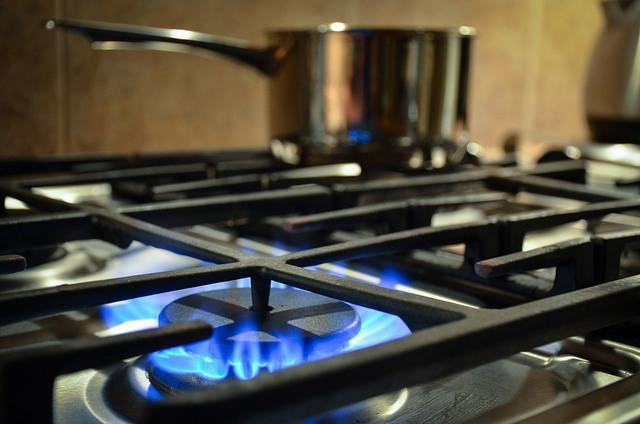The Energy Information Administration reports that natural gas fuels 50% of Virginia’s net electricity generation, making safe and efficient use of natural gas appliances a concern for many residents. If you have a gas stove, water heater or furnace there are basic safety tips that every homeowner needs to be aware of.
First, natural gas is mostly made up of methane which naturally has no smell, odor, or taste. Gas utilities add mercaptan, a chemical which creates a “rotten egg” smell. Make sure that everyone in your homes knows that a rotten egg smell signals a possible gas leak.
Next, install a carbon monoxide detector on every level of your home and check the detectors monthly by pressing the “test” button and waiting for the alarm. If an alarm sounds or you detect the rotten egg smell, leave the home and contact your gas utility immediately.
Outside of these two basic safety measures, there are other, easy things you can do safely as a homeowner to ensure your gas appliances are working as intended. For almost everyone, any troubleshooting or repairs outside of these basic tips are best left to a certified HVAC professional.
Stoves

Photo by Oregon State University
Many home chefs prefer cooking with gas for its quick response speed and ease of control. Keep your gas cooktop performing as it should with these quick checks.
Pull the stove out a few feet and inspect the connecting gas line for any signs of corrosion. For a cooktop installed in a counter, the gas line should be visible in the cabinet underneath. If you see corrosion, contact a qualified, licensed professional for replacement.
Turn on each burner and look at the flames themselves. A healthy gas flame will burn steadily and be blue in color, but if that flame isn’t getting enough oxygen it will appear yellow or orange. Sometimes it is temporary due to a dirty, clogged burner or particles in the air, but if after cleaning the burner the flame is still orange or yellow and stays this colour for longer than a few minutes, you need to get it looked at, again by a professional. Not only does a yellow or orange flame signal inefficient operation, it might also pose a risk.
Keeping your burners clean by cleaning up spills right away and washing the burner parts in warm, soapy water once a month or so is the best maintenance against clogged burners.
Water Heaters
As with stoves, the pilot light flame on a gas hot water heater should be blue and the pipes and tank should be free of corrosion.
In addition, water heaters with gas burners need to exhaust the fumes containing carbon dioxide to the outside of the home or into a central vent. Check the chimney or flue at the top of the water heater. Is it secure? Is there any corrosion or moisture on the top on the tank?
Another visual way to check for backdrafting on a gas water heater is to hold a mirror up to the draft hood, which is where the chimney enters the top of the water heater. If the mirror fogs up, backdrafting flue gases are present and a professional should be called in. Additionally, keep the area around the water heater clear of combustibles and debris by sweeping or vacuuming regularly. This includes the top — it’s not a shelf!
If your water heater checks out for safety, take a moment to make sure the temperature is set to the Department of Energy’s recommendation of 120 degrees. If the hot water pipes leading from the heater are bare, insulate them with fiberglass wrap to reduce energy use and costs.
Furnaces
Proper maintenance of your gas furnace will make sure it’s running as efficiently and safely as possible. A yearly inspection by a certified HVAC professional in the early fall before the heating season starts is the best thing you can do for your gas furnace. The technician will clean and adjust burners, belts and more, change the filter, check for leaks and evaluate the complete furnace cycle.
Outside of the yearly inspection, you can monitor your furnace by checking the filter monthly, sweeping or vacuuming around the furnace regularly, making sure the pilot light flame is blue, and periodically looking at flue pipes and vents to make sure everything is securely connected and sealed.
If you are looking at a furnace replacement in the near future, shop ENERGY STAR®
, and if possible, consider switching to a high efficiency heat pump.
With proper maintenance and basic safety protocols, your gas appliances can be long lasting, safe and as efficient as possible.
